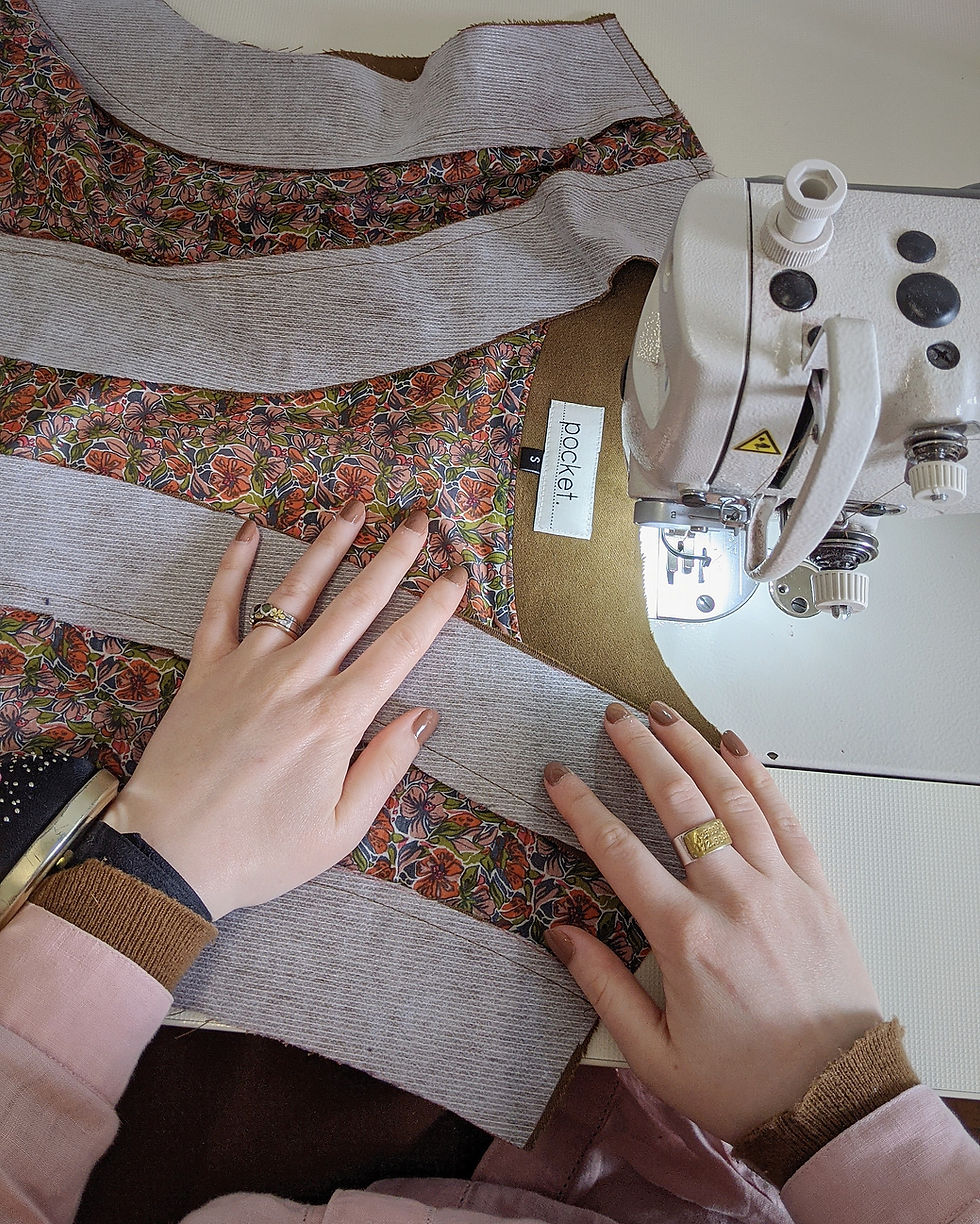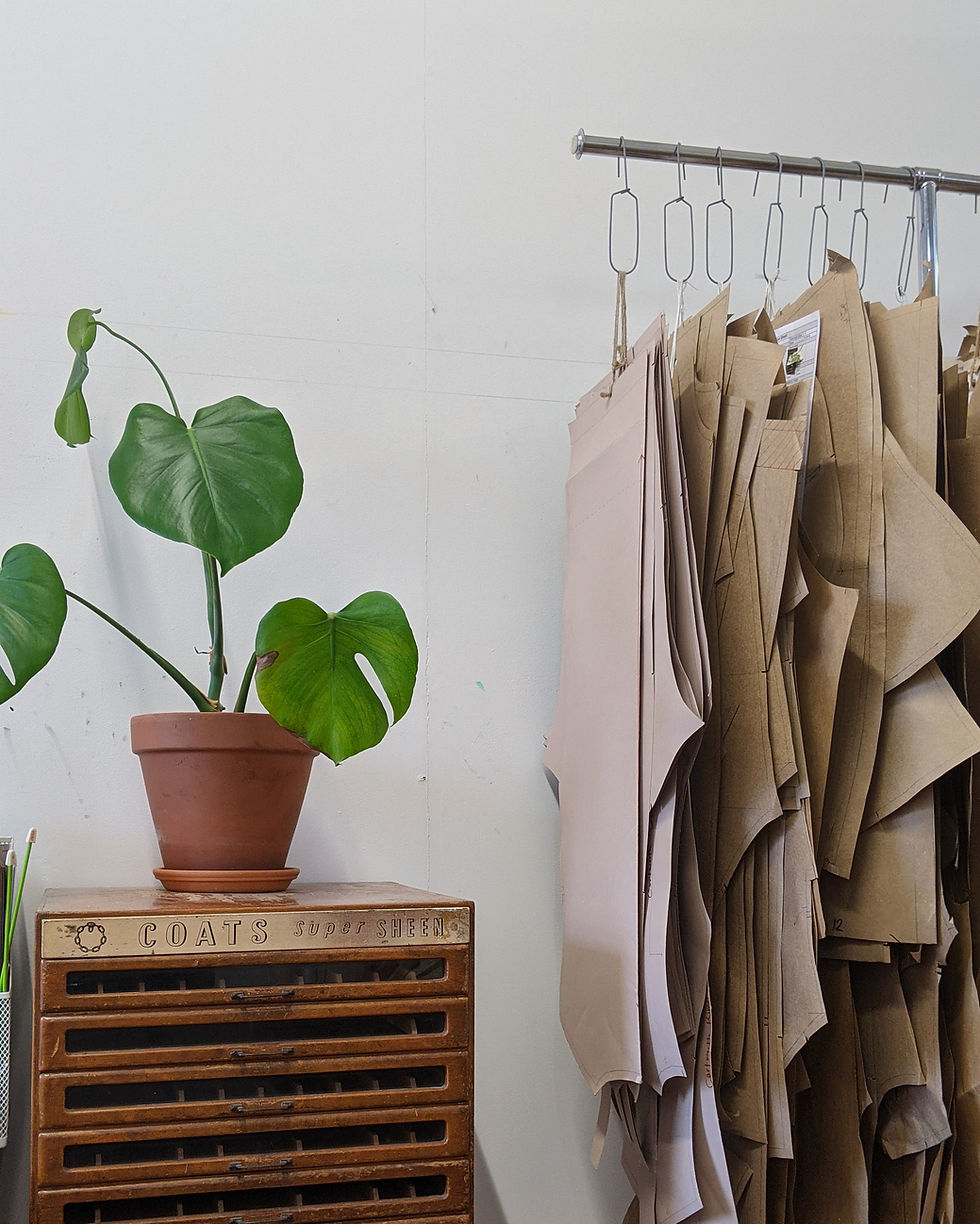All clothing is HANDMADE.

- Apr 13, 2021
- 4 min read

This journal entry has been saved in my drafts for nearly a year. I've revisited it countless times. Re-writing and re-wording sections, but always holding back from publishing. I'm discussing a topic which I feel very strongly about, but often find it a challenge to articulate my thoughts on since the subject is incredibly nuanced. I've also been worried about how to convey this message without sounding preachy or judgemental.
After the re-opening of non-essential shops in the UK yesterday, I read lots discussions around the queues outside Primark stores and I feel like now is exactly the right time to broach this subject. I read an article on The Independent yesterday entitled 'Have a look at yourself before you mock people for queueing outside Primark'. And it got me thinking of my own feelings of despair yesterday upon seeing the long line of folk waiting outside the Huddersfield store. My attitude is most certainly not directed at the customers themselves, as this particular article inferred. It is wholly directed towards the giant corporation who is profiteering from poverty on a global scale. We need to see the bigger picture here.
These kind of fast-fashion companies do provide affordable clothing...if you look at it from a single perspective - the cost per garment is comparatively low. But the quality is also low to match. And it's designed to be. It's known as 'planned obsolescence'. The garment will be worn & washed only a handful of times before it starts to come apart, and we end up returning to the same store to spend more money and buy a replacement. By this point, trends have likely changed and we feel the replacement is justified in order to keep up with the current fashions. However, if we look at the cost per wear, in most instances there's the potential for a piece of clothing to actually work out cheaper over time if it was slightly more expensive when first purchased if it doesn't need replacing countless times. Investing more in better quality clothing means it lasts us longer and doesn't need replacing as often.
The other side of this equation (and one completely discounted by the article I read yesterday) is the circumstances of those who make the clothes. And here comes the crux of what I've been writing and re-writing about for the past year within this post!
Every piece of clothing you buy is made by hand.
Whether that be machine-operated or entirely hand-stitched, there is always a person involved in the manufacture of garments, shoes and accessories. All clothing is ‘handmade’.

Our use of the word ‘handmade’ can be problematic. I quite often hear people say ‘I like stuff that’s handmade’ when talking about a purchase from a craft market perhaps. But I also hear it as a distinction between clothes bought from high-street retailers and clothing from an indie label. I think the thing I find unsettling about the current usage of this word is the unspoken assumption that other clothing is not handmade.
In general, as consumers we don't often get to see what goes on behind-the-scenes of making our clothing. This lack of transparency in garment manufacture has allowed for a disconnect to form in terms of our knowledge & understanding of what is involved in the process. And it's this disconnect that's been cashed in on by the fast-fashion industry in order to drive down the price of clothing.
Viewing high-street clothing as not 'handmade' removes the human element of it's creation. When we believe our clothes are made by machines funnelled through factories on conveyor belts, not only is this a misconception, but it also distances us from reality. And when we don't see the reality of garment manufacture, we don't question the low price tag.
And the price we pay doesn't necessarily reflect the true value of that item.
So much hidden value goes into garment production. As a very brief summary, this includes:
A farmer planting, growing and harvesting a crop
The crop being cleaned & refined into a fibre before being woven into a cloth.
The fabric created being dyed, finished/printed and checked for flaws.
A designer researching, creating and testing a design appropriate for the fabric.
A pattern-cutter drafting a pattern for that garment design, which is tested, tweaked and revised.
A grader taking that pattern, creating a size range and formatting a lay plan for the pattern pieces to make best use of the fabric.
A cutter using that lay plan to cut all the pieces in all the sizes.
A machinist taking those cut pieces and sewing them all together to create the garment.

Today, fast-fashion brands generally opt for mass-manufacture offshore, in countries where the cost of labour is much lower. Garment workers tend to be paid per item they make, which means they need to work as fast as they can in a high-pressure environment to be paid often less than they need to live on. So when we talk about a corporation which provides low-income families in the UK with 'affordable' clothing, we're also talking about one which exploits those living in poverty in developing countries in order to do so.
There's so much more I could say on this topic. It's an incredibly complex one to unpack. But if I could leave you with one takeaway from reading this, it would be to always visualise the person behind your purchase. Someone made your clothing by hand. Every purchase we make is a vote for the kind of world we'd like to see. And as consumers, we have to power to use that vote for a world where garment workers are paid a fair, living wage for the skilled work they do making our clothes.
Thanks for reading,



Comments